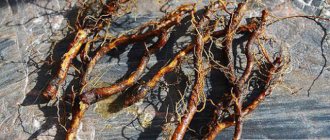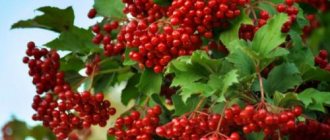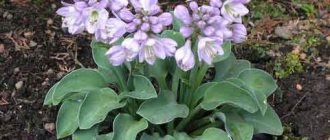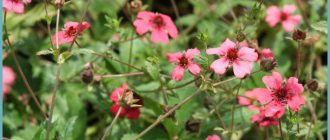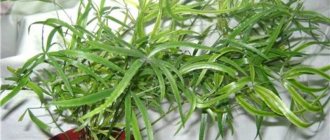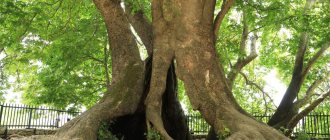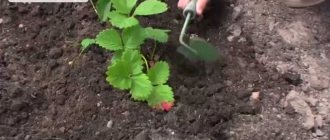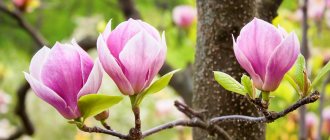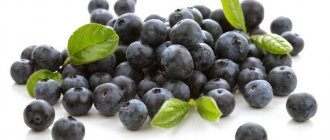Hawthorn is a small thorny honey plant of the Rosaceae family with small berries of bright red, black or orange color, which have a pleasant taste and medicinal properties. Thus, in Ancient Greece, bread baked from hawthorn berry flour was used as a means of healing heart disease. The name comes from the Greek “krataios”, which means “strong” and characterizes the quality of the bush’s wood. The genus of this crop includes deciduous, rarely semi-evergreen shrubs, numbering about 1250 varieties, the natural habitat of which is very wide and covers temperate and subtropical regions of the Northern Hemisphere. In addition, the ornamental plant serves as an excellent decoration for any garden plot and can be used to create a hedge. To do this, it is not at all necessary to purchase store-bought seedlings. You can propagate hawthorn yourself, even without special knowledge and skills.
How does hawthorn reproduce?
Hawthorn can be propagated in several ways. Some are more effective, but require a lot of time and effort, others allow you to get the desired result not immediately, but are less troublesome and difficult, which is especially important for beginner gardeners who do not have sufficient experience.
To grow large-fruited hawthorn on your site, you can choose any of the propagation methods:
- Cuttings are a vegetative method that consists of planting hawthorn shoots into the soil, previously cut into segments and kept in greenhouse conditions until a developed root system is formed.
- Propagation by root cuttings is considered a fairly effective method of propagation, since root cuttings take root well. Strong, healthy branches grow from them, which subsequently form a beautiful crown of hawthorn bushes.
- Rooting cuttings. Using this propagation method in spring or early summer allows you to obtain ready-made hawthorn seedlings in the fall.
- Reproduction by root suckers is not suitable for all types of hawthorn, but only for those that are capable of producing young shoots. The method is most suitable for bush forms of the crop.
- Planting hawthorn with seeds is a less effective propagation option. A plant grown from seeds does not retain the properties of the mother bush. In some types of hawthorn, up to 80% of the seeds are empty. Not all seeds sprout; the rest do not germinate at the same time. Under natural conditions, shoots appear 1–4 years after entering the soil. Experienced gardeners have learned to shorten this propagation period by resorting to the procedure of stratifying hawthorn seeds.
- Grafting is the best way to propagate hawthorn. By grafting an old bush, you can rejuvenate it and resume fruiting.
Knowing the features of each of the existing methods of hawthorn propagation, homeowners will be able to make the right decision about choosing the most suitable one. It is also necessary to take into account how much effort and time they are willing to devote to this and what results they plan to get.
Hawthorn propagation - methods, methods and features - Decorative world
The genus Hawthorn Crataegus, belonging to the Rosaceae family, is an easy plant to plant and care for, as well as to propagate. Hawthorn can reproduce in two main ways: vegetative and generative. Like most members of the Rosaceae family, all hawthorn species can easily reproduce by shoot parts (vegetative organs).
Vegetative propagation of hawthorn
Vegetative propagation of hawthorn is carried out using:
- Cuttings (stem and root);
- Layering;
- Bush divisions;
- Cloning;
- Root shoots (offshoots).
Each of these methods has its own advantages and disadvantages, but each allows you to preserve the varietal characteristics of the plant.
Cuttings of shoots
For cuttings, use young, non-woody shoots, cutting them off with a sharp knife or pruning shears at an angle of 45 degrees. The cuttings are planted in peat mixed with sand or perlite (1:1). Be sure to use a rooting agent and create high humidity for the cuttings (75-80%).
Disadvantages of cuttings: poor rooting, long time and low survival rate of cuttings
Root suckers
Hawthorns growing in the form of a bush produce root layering (trees produce layering much less frequently). The offspring is carefully dug up (so as not to damage the mother bush) and transplanted to a new location. Hawthorn is propagated by offspring in the autumn or late summer.
Disadvantages of the method: danger of damaging the mother plant, inability to propagate trees in this way.
Layerings
To obtain seedlings through layering, young shoots (1-2 years old) are placed in the ground, in a small groove, so that the top remains free. To secure the shoot, use a metal bracket or a wooden Y-shaped stick. Tighten the base of the layer with wire. Layerings begin in the spring or early summer in order to obtain a ready-made seedling before the fall.
Layers need to be watered, fertilized and covered with soil as they grow. You can also mulch them with straw, hay or peat.
Fertilize hawthorn layering with ammonium nitrate or complex soluble fertilizers once a month (during the growing season).
By autumn, a hawthorn shoot that has taken good roots is cut off and replanted. If the additional roots are not large, then replanting is carried out in the spring.
Disadvantage of the method: propagation by layering is suitable only for bush forms of hawthorn.
Root cuttings
Horse cuttings are harvested in the fall. In this case, parts of lignified roots 10-15 cm long are used, which are cut off and dug in, leaving them for the winter.
In the spring, they are cut in half and planted at an angle of 45 degrees, leaving 1 cm above the surface, while the thick part should be in the ground.
Such cuttings need to be planted either in a greenhouse or in a greenhouse to provide them with high humidity (up to 80%).
Disadvantages of the method: the duration of the process and the presence of a greenhouse.
Cloning
Hawthorn cloning is a relatively new method of propagation that allows you to obtain a huge number of seedlings in a short time (up to several thousand in six months). The essence of the method is that a plant bud, previously washed with a disinfectant, is placed in a nutrient medium.
After growing on a nutrient medium, the plants are transferred to a greenhouse or greenhouse. Next, planting and caring for hawthorn seedlings occurs as for plants obtained by cuttings.
Disadvantage of the method: it requires special laboratory conditions (sterility, nutrient medium, growing room).
Generative propagation of hawthorn
Reproduction of hawthorn using seeds is a much more time-consuming method, in which the varietal characteristics of the plant may not be preserved as a result of mutations or cross-pollination. A positive aspect of generative propagation is that hundreds or thousands of seedlings can be obtained from seeds.
In nature, hawthorn reproduces with the help of birds. The seeds pass through the digestive tract and receive natural scarification. Otherwise, the seeds may not germinate for several years.
A ripe hawthorn seed has a very hard shell, therefore, for better germination, you can use one of the following methods:
- use unripe fruits whose seed coat has not petrified;
- resort to stratification (aging in peat at a temperature of 3-5 degrees, at least 4 months);
- influence the seeds lying in peat, first with a warm temperature (up to 25 degrees, 2-4 months, and then cold - 3-7 degrees);
- use scarification - damage to the seed coat, stimulating germination (for this purpose, sulfuric acid is used, keeping the seeds in it for 15-20 minutes);
- seed treatment with 1% sodium nitrate solution (20-24 hours), used only for unripe seeds;
- Before sowing, the seeds are poured with warm water and left in a warm place for 3-5 days.
Sow the seeds in a rich substrate in the fall, water and mulch.
Source: https://dekorativnye.ru/razmnozhenie-boyaryshnika.html
How to grow hawthorn from seeds
Growing hawthorn from seeds is the most common and natural way of propagating it. However, it is not effective enough. When fully ripe, the hawthorn fruits fall from the branches. At the moment of their contact with the ground, the outer shell of the seeds is highly compacted. This prevents their rapid germination, which becomes possible only after the destruction of the pericarp. Experienced gardeners advise preparing seeds for propagation from unripe berries of the plant, the shell of which has not yet hardened.
Propagation of hawthorn by seeds under natural conditions allows you to obtain the first shoots within 4 years from the moment they enter the soil. To reduce this period, it is recommended to carry out artificial stratification of seeds. This procedure involves exposure to different temperatures. To implement this, you need to connect the following components:
- 1 part seeds;
- 3 parts peat crumbs.
The resulting composition is moistened by adding a small amount of water, then rubbed on sieves and washed. Drainage holes are made in wooden boxes. The bottom is lined with gauze, folded in 2 layers, on which prepared hawthorn seeds are laid.
The stratification procedure consists of two stages:
- Warm stratification during hawthorn propagation involves keeping the seeds at room temperature 20 - 25 °C for 4 months while constantly maintaining the humidity level.
- Cold stratification lasts from 3 to 6 months at a low temperature of 5 - 7 °C. To do this, wooden trays are taken to the cellar or placed on the bottom shelf of the refrigerator, if the amount of prepared raw materials allows.
New technologies for propagating hawthorn from seeds, in addition to the stratification procedure, also include other innovative methods of pre-sowing treatment of planting material. Thus, hawthorn seeds are subjected to acid scarification by keeping them in concentrated sulfuric acid for 20 minutes. Afterwards, the seeds are mixed with coarse sand and ground in a mortar for 30 minutes.
To effectively plant hawthorn with unripe seeds, it is recommended to process them by soaking them in a 1% solution of sodium nitrate for 24 hours. After treatment, before direct planting, the seeds are placed in a container with water and kept in this state for 3 to 7 days.
Seeds are planted in the soil in the fall. The planting area is mulched with spruce branches or fallen leaves. If you follow the rules for propagating, processing and growing hawthorn at home, the first shoots will appear from stratified seeds in the summer.
The video clearly demonstrates growing hawthorn from seeds:
How to grow hawthorn from cuttings
The cutting method has its own characteristics, which must be observed in order for the hawthorn propagation process to be effective. First of all, it is important to choose the right shoots for cutting cuttings. Gardeners without experience often make a big mistake by choosing shoots that grow upward. Such cuttings will not be able to form a good root system. For propagation of hawthorn by cuttings, lateral branches that are not characterized by active growth are suitable.
It is also wrong to choose long shoots and cut them into several parts. In this case, only those cuttings that were located at the base will be able to take root.
Important! The apical part of the hawthorn shoot has a very low survival rate.
There are several recommendations for the correct selection of planting material intended for propagating hawthorn by cuttings:
- The shoots should not be frozen or have any other damage.
- It is better to take vegetative material for propagation from the middle of the bush, focusing on the southern part of the crown.
- The age of hawthorn shoots should not exceed 1 - 2 years.
- The optimal thickness of each cutting is 7 – 8 mm.
In the successful propagation of hawthorn by cuttings, correct cutting of plant segments plays an important role. The culture reproduces poorly with lignified shoots. To divide such hawthorn cuttings into parts, cuts should be made in the center of the internodes. Greenish unripe shoots are cut off under a bud or node, since the tissues in these places are most protected from the occurrence of fungal diseases.
On all cuttings, the top cuts must be made at an angle of 45 degrees, very close to the bud, without leaving stumps. To do this, use a sharp knife or pruning shears, previously disinfected.
Hawthorn propagation by cuttings is carried out in early spring, before the start of the sap flow period, and also in late autumn, after the end of leaf fall. Cuttings, cut into pieces 10–15 cm long, are kept for an hour in a solution that stimulates root growth, after which they are planted in a mixture prepared from equal parts of peat and sand. The top layer is moistened with a root-forming composition in which the cuttings were previously located.
To improve the rooting process, the cuttings are covered with glass jars, thus creating conditions similar to those in a greenhouse. After the first leaves appear, the jars are removed for 10–15 minutes, increasing the time the hawthorn seedlings spend in the fresh air every day.
The seedlings are fed with fertilizers containing nitrogen. Water abundantly, but infrequently, only after the top layer of soil has had time to dry. The next year, the stronger, rooted bushes are planted in open ground at intervals of at least 2 m. In the 4th year after rooting, for better growth and development of seedlings, experienced gardeners advise replanting them. If you follow this recommendation, propagation and planting of hawthorn cuttings will be more effective.
The main disadvantages of the method of propagating crops by cuttings are the low survival rate of cuttings, poor rooting and the long period of time during which planting material is prepared, selected and processed before directly planting in the soil.
On planting cuttings | sotki.ru | Your 6 acres
Gardeners propagate fruit and berry crops using woody, green and root cuttings. In autumn, planted cuttings are cared for differently - depending on the culture, degree of rooting and further cultivation.
Currants , aronia, actinidia, felt cherry, honeysuckle, viburnum, lemongrass, sea buckthorn, elderberry, and clonal rootstocks are propagated from woody cuttings. This method is based on the ability of pieces of the stem, after being separated from the mother plant, to form roots in the soil or other substrate.
Using blackcurrant as an example, we will dwell on certain aspects of the technology for growing seedlings using lignified cuttings.
Cuttings from mother plants are most often harvested in the fall after the wood has ripened and natural or artificial leaf fall has occurred.
The cuttings are stored in conditions that do not allow premature bud germination and tissue drying (basements, snow piles, etc.).
Harvesting cuttings in spring is also possible, but it gives worse results. The most suitable sections of annual stems are 18–20 cm long.
Cuttings are planted in early spring, as soon as soil conditions allow. The cuttings are planted in the garden bed obliquely, at an angle of 45°. The distance between rows is 50–60 cm, in a row between cuttings – 8–10 cm.
Two buds remain on top, one of them should be at soil level.
Autumn planting is allowed in places where there is no danger of autumn-winter damage to the cuttings: drying out, getting wet, freezing and bulging.
In the summer, the cuttings are watered, weeded, fed, and, if necessary, pests and diseases are controlled. With good care, by autumn, annual shoots grow 55–60 cm high, with a diameter at the base of 0.6–0.8 cm, with a fibrous and branched root system 15–20 cm long.
These annual seedlings are quite suitable for planting in a permanent place. In the Central region, at the end of October, before the onset of frost, the leaves are removed and the seedlings are dug up and sorted at the same time. If there are individual underdeveloped specimens, they are planted for re-schooling.
However, if at the end of the season the annual plants are overwhelmingly weak, they are left in place for the second year for growing. In the spring of next year, before the buds open, annual shoots are cut into 2-3 buds, then they are cared for in the proper way. By autumn, standard two-year-olds with 3–4 developed shoots and a powerful root system grow.
Green cuttings are one of the most effective and accelerated methods of propagation.
Green cuttings are used to propagate currants, gooseberries, raspberries, honeysuckle, cherries, plums, cherry plums, sea buckthorn, clonal rootstocks of pome and stone fruit crops, as well as most non-traditional fruit and ornamental plants (viburnum, rowan, chokeberry, barberry, hawthorn, blueberry, bird cherry, rose hip , serviceberry, blackberry, etc.). Green cuttings are carried out mainly in June.
First, prepare a greenhouse with the appropriate substrate. For a greenhouse, dig a trench 40 cm deep and 70–80 cm wide. Drainage materials are placed in the greenhouse, a layer of a mixture of sand and peat is laid, the surface is sprinkled with a rooting substrate (sand, vermiculite, perlite) in a layer of 3–4 cm. A frame is installed above the greenhouse and cover it with film.
Cuttings are prepared from growing shoots of the current year, cut from varietal, high-yielding and healthy mother plants.
Cuttings of the cherry varieties Pamyati Vavilova, Turgenevka, Vladimirskaya, Zarya Povolzhya, Zhagarskaya, Shubinka, Polevka, Rastunya, Amorel pink take root well (80%); plums – Red quick-ripening, Rock dove, Moscow Hungarian, Memory of Timiryazev, Tula black, Alyonushka, Iskra.
Harvested shoots are cut into cuttings: for most crops, the optimal cutting length is 2–3 internodes. A cutting ready for planting has 2–3 true leaves and a lower part 1.5–2 cm long. In a greenhouse, the distance between rows is 5–7 cm, between cuttings is 4–5 cm, planting is vertical, planting depth is 1.5– 2 cm.
During the period from planting the cuttings to the formation of roots on them, it is necessary to ensure constant moistening of the leaf blades. At the end of July - beginning of August, massive formation of roots is observed. During the summer, fertilizing is carried out. After the roots have formed, watering is reduced and the greenhouse is often opened, hardening off the plants.
Rooted cuttings are planted in special beds for growing or left at the rooting site until autumn, or even spring. Most often, in September, rooted cuttings are dug up, the leaves are washed and sorted. Strong plants with high winter hardiness are planted in a permanent place; weak ones - for growing.
It is better to plant in early September. Before frost, the plants will have time to take root in their new location. For the winter, they are covered with peat with a layer of 12–15 cm. Plants with low winter hardiness are best left at the rooting site. For successful overwintering, they must be covered before the onset of frost with dry sawdust, peat, spruce branches, and pine needles.
Sometimes dug plants, buried and covered, are stored in a trench or boxes with sand in basements or other rooms where the temperature is within 1–2°. In the spring, the preserved strong plants are planted in a permanent place. Weak ones are grown for another 1–2 years. At the same time, they are planted in the spring as early as possible on ridges with fertile soil.
Row spacing is 20–30 cm, between plants in a row is 10–15 cm.
Propagation by root cuttings is based on the ability of roots, cut into pieces, to completely restore the plant with the above-ground part and root system.
This method can be used to propagate plums, cherries, raspberries, clonal rootstocks, vines, herbaceous plants, etc. If the mother plants are rooted, then specimens grown from root cuttings are suitable for planting.
Grafted plants can be used as rootstocks.
The method is successfully used in the propagation of self-rooted plum trees. At the same time, such varieties as Skorospelka red, Tula black, Volzhskaya krasavitsa, etc. reproduce well. The method is also used in the propagation of high-yielding rooted varieties of cherries (Vladimirskaya, Shubinka, etc.).
A gardener who wants to grow his seedlings on dwarf rootstocks often experiences difficulties in purchasing rootstocks. One way to solve this problem could be root cuttings.
Many root cuttings can be prepared from a neighbor if for some reason he uproots a tree on a dwarf rootstock; you can dig them up in a fruit nursery when eliminating the mother plant of clonal rootstocks, or when digging up seedlings on clonal rootstocks.
Cuttings are prepared in the fall or spring before the beginning of the growing season. The length of the cuttings should be 10–15 cm, thickness – 0.6–2 cm. Harvested cuttings are stored in the basement or cellar in winter at a temperature of 0 to 1°. In the spring, 2–3 weeks before planting, the box with cuttings is transferred to a room with a temperature of 15–18°.
Root cuttings are planted in early spring. The distance between rows is 10–15 cm, between cuttings in a row – 7–8 cm. In the future, when caring for plantings in the area where root cuttings are placed, sufficient soil moisture is maintained, weeds are controlled, and fertilizing is carried out.
Excess shoots are broken out; On each cutting only one, the strongest shoot is left.
By autumn, with good care, most plants are usually suitable for planting in a place where they are grown for 1–2 years to the size of rooted seedlings, or in a place where they will be budding next year in the summer (if these are rootstocks).
Source: https://sotki.ru/sad_ogorod/article/na-posadkah-cherenkov-6088
Hawthorn grafting
Grafting (budding) is best suited for propagating garden varieties and forms of hawthorn. There are three ways to plant a fruit crop:
- Into the cleft The upper part of the plant branch, the rootstock, is cut off. The surface of the remaining part is vertically incised to a depth of 5 cm. A cutting, scion, with 3 - 4 buds is inserted into the resulting incision. In order for it to fit better into the recess of the branch, its lower side needs to be given a spear shape.
- In the butt. Grafting is carried out in the same way as in a split, only in this case the scion is inserted into an incision made on the side of the rootstock.
- Copulation. The simplest propagation method that even an inexperienced gardener can handle. Only one important condition must be met - the thickness of the rootstock and scion must be the same. The branch and cuttings are cut at an acute angle of 30 degrees. The method is simple to implement and ensures 100% survival rate of cuttings. The first fruits from the grafted branches can be collected within a year.
Regardless of the chosen method of grafting a fruit crop, a certain sequence of actions is performed:
- The junction of the scion and rootstock is tied with cellophane or electrical tape. It is important to protect the grafting area from moisture, but the branches should not be overtightened.
- Open areas are smeared with garden varnish.
- 30 days after the formation of buds on the grafted hawthorn branches, the bandage is loosened.
During the period of fusion, the plant requires careful care - watering, removal of dry branches, treatment against pests, protection from direct sunlight.
Various fruit crops can be grafted onto hawthorn - pear, apple, dogwood, cherry. The most suitable rootstock for hawthorn is red rowan. As a result of such propagation, a tree grows with fruits that have good taste and medicinal qualities. With the help of grafting, you can give a second life to an old hawthorn bush, after which it will begin to bear fruit again.
When carrying out experimental grafting of various crops, you should be prepared for the fact that not every type of tree will be able to take root well with hawthorn. The results of such reproduction will be visible only after a few years. Experienced gardeners do not recommend grafting hawthorn onto an apple tree.
Important! The main rule of grafting: only stone fruit trees take root on stone fruit crops, and pome trees on pome crops.
If this principle is not observed, the plants obtained as a result of crossing interspecific trees will be weak and low-yielding.
Hawthorn propagation by grafting is carried out in early spring after the snow has melted or in the fall after the leaves have completely fallen. Shrubs that are 2 years old and have a root collar 1 cm thick are best suited as a scion. To carry out grafting, the branches are cut at a height of 1 m, leaving the side shoots untouched.
Cuttings for propagating a fruit crop must be well selected. It is better to cut them from the south side of the bushes. They should be harvested in the fall and stored in a cool place - a cellar or refrigerator. A prerequisite for high-quality fusion and further development of the scion is the presence of 4–7 developed buds.
Method of cuttings “constriction”
With this method, an already well-formed shoot that has matured is selected. The 3 lower leaves and just below the buds are removed from it, and the shoot is tied well with soft wire.
Then you need to take some moss and rinse it well with boiling water. Then add a little garden soil and a couple of drops of a root stimulant - this could be heteroauxin. The entire mixture is slightly moistened with water from a spray bottle. Then you need to take a cellophane tape measuring 10 by 20 centimeters, put moss and peat mixture on it and bandage the shoot in the place of constriction with cellophane. It should look like you are putting a cast on your arm. The result should be that a cocoon of peat mixture will appear on the shoot in the area of the constriction. In the place where the constriction was made, the process of disrupting the movement of juice that passes from the leaves to the roots will occur. The plant, in turn, will begin to struggle with the constriction, as a result of which a small influx of tissue will form in this place. As a result, after 2 months, roots will form in the place where the constriction will be, and after 4 months the entire cocoon of cellophane tape will be pierced with roots. As soon as this happens, you can carefully cut the shoot from the trunk, just below the constriction site, remove the cellophane and move the cutting with roots for growing.
Growing hawthorn from root cuttings
Root cuttings are considered the most effective way to propagate large-fruited hawthorn. Root cuttings take root easily and produce strong, high-quality shoots. Hawthorn can be propagated both in autumn and spring.
With the arrival of spring, they dig up a shrub suitable for propagation, with a good root system, which is cleared of soil and cut into pieces 8 cm long. Each root is partially sprinkled with earth, leaving no more than 2 cm on the surface. To slow down the evaporation of moisture, the soil around the buried roots mulch with sawdust, shavings, sand, hay, straw. To protect future shoots and create greenhouse conditions with high levels of air humidity, root cuttings are covered with plastic bottles or other similar means.
To propagate hawthorn by root cuttings in the fall, the root of the selected shrub is divided into 15 cm long segments and placed in the soil obliquely at an angle.
An unusual method of cuttings
Currently, some gardeners have begun the practice of plant propagation using an unusual but very effective method. This method makes it possible to root even those cuttings that are difficult to graft, for this:
- Hawthorn cuttings are pre-cut.
- Then a potato is taken, from which all the eyes are removed so that the potatoes do not grow.
- After this, a hawthorn stalk is inserted into the potatoes.
- Next, the potato tuber and cuttings are placed in the soil and dug in.
- The top of the cutting is covered with a glass jar.
This method is very effective; with this germination, the seedlings are supplied with a large amount of nutrients that they receive from the potato tuber.
As a result of this propagation method, cuttings actively produce roots. The resulting seedlings subsequently germinate and develop very well.
How to propagate hawthorn by layering
To propagate hawthorn by rooting layering in order to rejuvenate the bushes, they are pruned. The next year, the soil near the selected bushes is fertilized with humus. After the snow melts, annual shoots are placed in pre-dug shallow grooves, securing them with a wire loop so that photosynthesis products do not fall into the mother bushes.
The branches are sprinkled with soil, leaving only the top edge on the surface. The cuttings are regularly watered and a 1% solution of ammonium nitrate is added to the grooves 2–3 times. After young shoots appear from the tops, the layerings are earthed up every 2 weeks.
In autumn, shoots with a well-developed root system are separated from the main bushes and planted in beds for growing. If the roots are poorly formed, the plants are left until next year. Growing of seedlings of fruit crops is carried out for 4 years. The seedlings are watered, loosened and weeded. In the second year, the frequency of watering is reduced, but made more abundant. Watering is combined with fertilizing with nitrogen-based fertilizers.
Important! The method of rooting layering is suitable only for bush forms of hawthorn.
The main methods of propagation of hawthorn. Detailed description
Hawthorn is a member of the Rosaceae family. Among the large number of varieties and species of this plant, there are huge ten-meter trees and small shrubs.
The external attractiveness allows the use of hawthorn in landscape design. Of particular value are the fruits, which are actively used for medicinal purposes.
Representatives of agricultural enterprises and ordinary amateur gardeners are actively propagating hawthorn both for sale and for growing on their own plot.
Reproduction methods
Having learned how to propagate hawthorn using different methods, you can choose the most suitable option for yourself. You can get a young specimen of an unpretentious and useful plant in the following ways:
Cuttings
Shoots are harvested in the fall after the leaves fall or in early spring before the sap begins to flow. They use parts that are located closer to the center of the branch, because the apical and lower ones take root much worse.
The ideal material of good quality for propagation is a young one-year-old cuttings without damage, not woody (green), up to 1 cm thick.
The trimming is carefully cut under the bud diagonally with a sharp tool and placed in the rooter for about an hour.
photo: © maxpull-tlu7l6lqiu.stackpathdns.com
The blanks are planted at a distance of 20 cm from each other, the width between the rows is approximately 40 cm. Plants can be placed in a permanent growing area no earlier than after a year. Typically, young bushes are placed in a room with intensive care for growing for about another 3 years.
Graft
Propagating hawthorn in this way is the most reliable way. Red rowan is considered the best rootstock. The vaccination is done in early spring after warm weather has settled. Young shoots with a diameter of about 1 cm are selected for the scion.
The procedure can be performed in three ways: Reproduction work is carried out carefully, without touching the sections with your hands to avoid infection. In about a month it will become clear whether the graft has taken root - new young shoots should appear.
Root growth
Similarly, you can get a new hawthorn in three vegetative ways.
Separate young plants that grow near the mother bush. Reproduction by such offspring is mainly carried out with bush forms; shoots appear in trees much less frequently.
At the end of summer or beginning of autumn, the lateral shoots are carefully separated from the mother plant without damaging its largest root. Young shoots are left in the same place until spring.
After the start of spring growth, it will be clear whether the young bush has survived. It is carefully transferred, transplanted to a permanent place.
Propagation by root cuttings. Separate a part of the rhizome at least 2 cm thick from an adult bush, make blanks about 10 cm long from it. Dig them in at a slight angle, the thicker end should be at a distance of about 2 cm from the surface of the ground.
photo: © tastethewild.co.uk
Growing cuttings. Strong annual growths located near the roots of the plant are placed in grooves. They are fixed in the ground, leaving only the top outside.
The base is tied with soft wire, watered regularly and fertilized with ammonium nitrate a couple of times a season. It is better to plant the next year, having first checked whether the cuttings have grown good roots.
The harvested shoots are planted in a greenhouse for further cultivation.
Seeds
Growing hawthorn from seed is a rather labor-intensive method. It is not recommended to propagate valuable varieties using this method, because a young seedling grown from a seed does not always inherit all the characteristics of the parent plant.
photo: © thesproutlingwrites
Select fruits that are not fully ripe. They are inspected and those that are rotten or damaged are rejected. The hawthorn seed is very hard, so the sorted seeds are soaked and placed in warm water for several days.
In this case, it is necessary to ensure a constant temperature in the container with the material, for example, by placing it on a switched-on radiator. This method of preparing for sowing is called stratification. Its use helps to partially destroy the thick shell of the fruit.
As a result, seedlings appear earlier than without stratification.
photo: © cdn.monrovia.com
After this procedure, the fruits are kept in light soil in a warm place for several months. Later they are placed for the winter in a room with a temperature slightly above zero degrees.
“Immediately before sowing, the seeds should be further processed.”
Scarification is used - a method that allows you to partially artificially destroy the hard shell of the fruit. For hawthorn, two methods of such processing can be used: Chemical. The seeds are poured into a three percent acid solution (hydrochloric or sulfuric) for 2-3 hours. You can place them in one percent sodium nitric acid for 24 hours, then rinse thoroughly with cold water.
photo: © nwdistrict.ifas.ufl.edu
Thermal. The fruits are alternately immersed in boiling water and ice water, every 30 seconds.
“Scarification was successful if the seed increased in size and swelled.”
In the fall, the fruits prepared last year are sown in fertile soil. They need to be well watered, covered with peat and straw and left for the winter.
Young shoots are very weak, often get sick, and can only germinate after one and a half to two years. At first they grow about 10 cm annually.
When small hawthorns reach a height of 55-65 cm, they are shortened, leaving three buds above the ground. Keep two shoots on each bush, the remaining lateral shoots are removed.
Care
Hawthorn is a light-loving and drought-resistant plant. This is an unpretentious representative of the rose family, but young bushes require special attention.
To plant young shoots, prepare loose soil based on peat and sand in equal parts. Acidic soil is undesirable; a small amount of chalk is added to prevent this problem. Add lime to the prepared hole, making sure it does not come into contact with the roots.
It is useful to make drainage from broken stone or gravel. Distribute the roots in the hole, trying not to touch them with your hands. If some roots remain on the surface, this will slow down the development of the hawthorn in the future. Neighboring plants are placed at a sufficient distance from each other so that over time their roots do not touch.
Soft soil is needed, so the soil is mulched.
photo: © nature.mdc.mo.gov
In the spring, in the second year after propagation, nitrogen fertilizers and urea are applied to young seedlings, and in the fall - a solution of nitrophoska. Young hawthorns need a greenhouse with high air humidity.
They will appreciate systematic watering; the soil under the seedlings should be constantly moist. In summer, gardeners prevent plants from overheating, shade them from direct sunlight and spray them generously.
Plantings are loosened in time and weeds are removed between rows.
photo: © solentreserves
Young seedlings can grow in partial shade or in the sun. It is better to choose a well-lit and warm area as a permanent habitat. This will allow you to get a lot of fruit in the future, because the lack of light impairs fruiting.
“It is not recommended to replant a plant older than five years.”
Possible difficulties
Problems in the process of hawthorn propagation can arise at different stages and when using different methods. Following these simple rules will help you avoid them:
- Carefully study how hawthorn propagates using the chosen method, find out its features.
- Use only high-quality starting material from a healthy specimen.
- Carry out all the necessary preparatory work before propagating the plant.
- Keep the tools clean, wash your hands before handling, and work carefully.
- Provide constant careful care for young specimens: watering, fertilizing, protecting from weeds and pests.
- Hawthorn is a frost-resistant plant, but young bushes in the first years of life must be covered with dry leaves for the winter.
Pest Control
For young plants, the risk of being damaged by pests is quite high. This problem occurs especially often in hawthorns grown from seeds. If aphids, weevils, mites or scale insects attack, the plantings should be treated with an insecticide according to the instructions.
Disease Prevention
Common diseases of hawthorn are rust, hole spot and powdery mildew. In case of disease, treat with fungicides. For planting, choose well-ventilated areas and follow the care technology. It is not recommended to place coniferous trees nearby, which are carriers of rust.
As a preventive measure, plants are sprayed with one percent colloidal sulfur, which improves the appearance and increases the immunity of young shoots. Hawthorn propagation is difficult but interesting work. With a serious and thoughtful approach to the process, you can get wonderful young plants that will delight you with their aesthetic appearance and healthy fruits.
Source: https://vosaduly.ru/articles/razmnozhenie-boyaryshnika.html
How to propagate hawthorn by root suckers
To cause intensive appearance of young shoots, fruit bushes are pruned. After a few months, shoots appear from the adventitious buds, on which their own root system begins to form. Its offspring usually grow from the mother bush to a distance of up to 30 cm. After the new plants overwinter and, having reached a height of 10 cm, begin to turn green, the offspring are separated from the mother bushes. It is advisable to do this no later than July. This way, the young growth will not take away the nutrients it needs from the main bush and will be able to take root well, preparing for the first independent wintering.
The shoots are dug up, taking extreme care, along with a lump of earth. The main root of the mother hawthorn bush should not be pulled out. The shoots are separated from it with pruning shears or chopped off with a shovel. To avoid drying of the roots, the cuttings must be immediately planted in the soil in a designated area of the garden.
Beneficial and harmful properties of hawthorn
I love talking about the beneficial properties of products. You tell others - and you yourself want to eat such yummy food. And hawthorn is no exception. Its usefulness is explained by its composition. It includes complex vitamins A, C, K, E and group B. It contains biologically active substances: essential oils, choline, sorbitol, fructose, starch and more.
In this regard, consumption brings benefits to the body:
- Removes waste, toxins and heavy metals from the body.
- Works as an anti-inflammatory: fights viruses and pathogenic bacteria, destroys infection in the body.
- Stimulates the functioning of the immune system.
- Dilates blood vessels, absorbs oxygen into the heart muscle, relieves arrhythmia. So hawthorn is a salvation for heart patients.
- Also, eating berries normalizes sleep, so eat (or brew in hot water) for insomnia and nervous disorders. It is also used to relieve symptoms of stress and depression.
- The peculiarity of the fruit is its astringent properties. Because of this, hawthorn is used to treat dysentery and diarrhea.
- In women, it normalizes hormonal levels (especially during menopause and other important changes in the functioning of the body).
- Helps in the fight against migraines, dizziness and frequent headaches.
Author's note
Natalia Papanova
Blog author
For medicinal purposes, not only the berries of the plant are used, but also the twigs and leaves.
To learn how and where hawthorn is used, see the video below:
Yes, there are many benefits from eating berries, but do not forget about the harm.
Remember one rule: you can’t overuse hawthorn.
. This causes drowsiness and heart rhythm disturbances. Other harmful effects are associated with contraindications for use:
- Individual intolerance to the product and allergic reactions.
- With hyperacid gastritis. Otherwise, after you eat the berries, you will experience vomiting or diarrhea.
- During the period of exacerbation of gastric ulcer.
- With low blood pressure.
- It is not recommended for pregnant and nursing mothers to eat.
In order not to worry about the consequences, monitor the amount of berries you eat. The daily norm does not exceed 150 g.
And to get additional vitamins in winter, learn how to grow watermelon on your windowsill at home. The berry is unpretentious, and, most importantly, healthy!
Tea with the addition of hawthorn is enriched with vitamins
